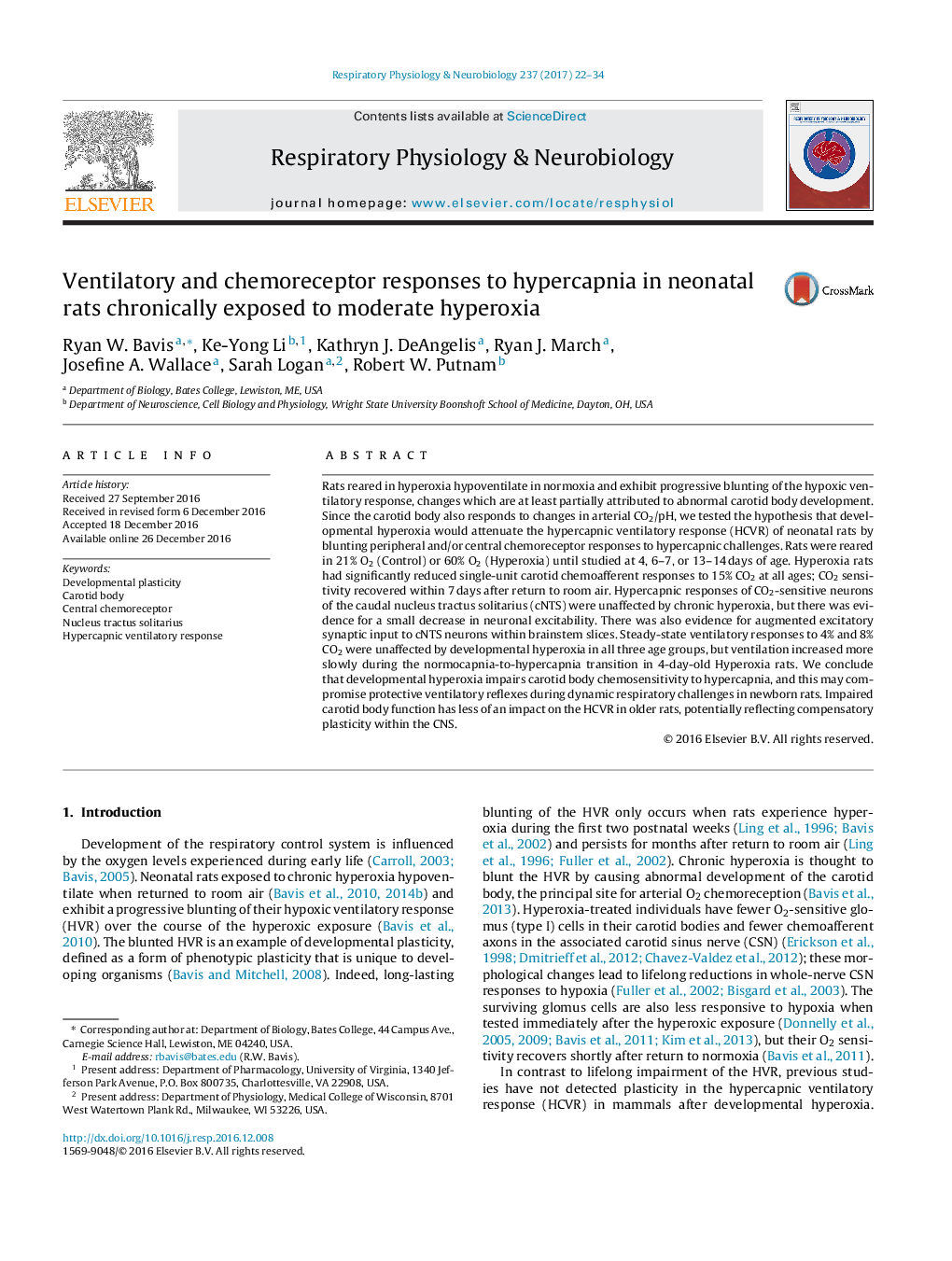| کد مقاله | کد نشریه | سال انتشار | مقاله انگلیسی | نسخه تمام متن |
|---|---|---|---|---|
| 5594214 | 1571293 | 2017 | 13 صفحه PDF | دانلود رایگان |
عنوان انگلیسی مقاله ISI
Ventilatory and chemoreceptor responses to hypercapnia in neonatal rats chronically exposed to moderate hyperoxia
ترجمه فارسی عنوان
پاسخهای تهویه و شیمی درمانی به هیپاپپنیا در موشهای نوزاد تازه متولد شده در معرض هپارسیک متوسط
دانلود مقاله + سفارش ترجمه
دانلود مقاله ISI انگلیسی
رایگان برای ایرانیان
کلمات کلیدی
موضوعات مرتبط
علوم زیستی و بیوفناوری
بیوشیمی، ژنتیک و زیست شناسی مولکولی
فیزیولوژی
چکیده انگلیسی
Rats reared in hyperoxia hypoventilate in normoxia and exhibit progressive blunting of the hypoxic ventilatory response, changes which are at least partially attributed to abnormal carotid body development. Since the carotid body also responds to changes in arterial CO2/pH, we tested the hypothesis that developmental hyperoxia would attenuate the hypercapnic ventilatory response (HCVR) of neonatal rats by blunting peripheral and/or central chemoreceptor responses to hypercapnic challenges. Rats were reared in 21% O2 (Control) or 60% O2 (Hyperoxia) until studied at 4, 6-7, or 13-14Â days of age. Hyperoxia rats had significantly reduced single-unit carotid chemoafferent responses to 15% CO2 at all ages; CO2 sensitivity recovered within 7Â days after return to room air. Hypercapnic responses of CO2-sensitive neurons of the caudal nucleus tractus solitarius (cNTS) were unaffected by chronic hyperoxia, but there was evidence for a small decrease in neuronal excitability. There was also evidence for augmented excitatory synaptic input to cNTS neurons within brainstem slices. Steady-state ventilatory responses to 4% and 8% CO2 were unaffected by developmental hyperoxia in all three age groups, but ventilation increased more slowly during the normocapnia-to-hypercapnia transition in 4-day-old Hyperoxia rats. We conclude that developmental hyperoxia impairs carotid body chemosensitivity to hypercapnia, and this may compromise protective ventilatory reflexes during dynamic respiratory challenges in newborn rats. Impaired carotid body function has less of an impact on the HCVR in older rats, potentially reflecting compensatory plasticity within the CNS.
ناشر
Database: Elsevier - ScienceDirect (ساینس دایرکت)
Journal: Respiratory Physiology & Neurobiology - Volume 237, March 2017, Pages 22-34
Journal: Respiratory Physiology & Neurobiology - Volume 237, March 2017, Pages 22-34
نویسندگان
Ryan W. Bavis, Ke-Yong Li, Kathryn J. DeAngelis, Ryan J. March, Josefine A. Wallace, Sarah Logan, Robert W. Putnam,
